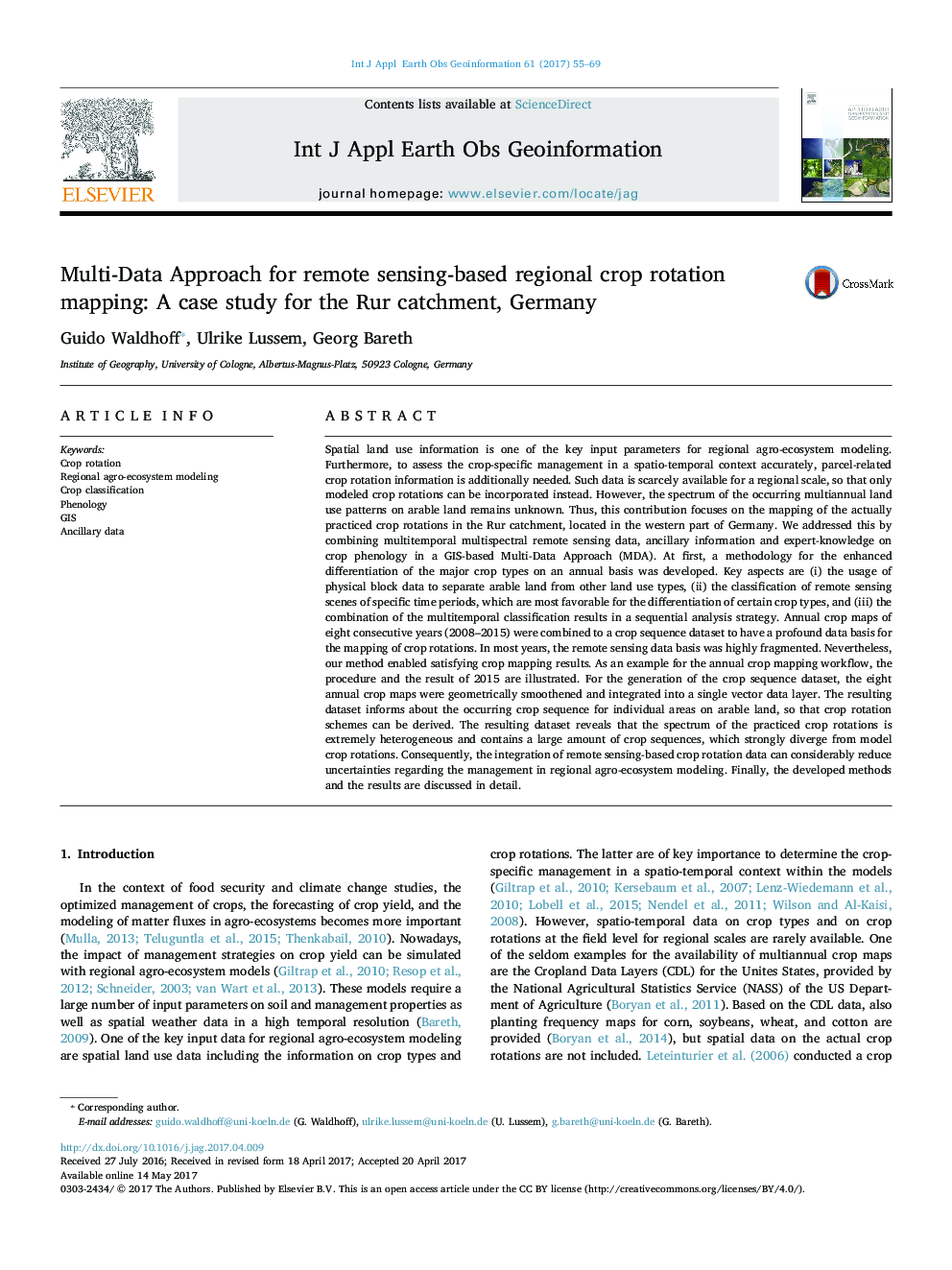| کد مقاله | کد نشریه | سال انتشار | مقاله انگلیسی | نسخه تمام متن |
|---|---|---|---|---|
| 5755577 | 1621796 | 2017 | 15 صفحه PDF | دانلود رایگان |
- A method for multitemporal remote sensing and GIS-based crop mapping is proposed.
- Usage of remote sensing and ancillary data strongly improved crop classification.
- Consideration of phenology was essential to differentiate certain crop types.
- Regional crop sequence/rotation mapping at the field scale based on eight years.
- Mapped crop sequences/rotations often differed from prototype crop rotations.
Spatial land use information is one of the key input parameters for regional agro-ecosystem modeling. Furthermore, to assess the crop-specific management in a spatio-temporal context accurately, parcel-related crop rotation information is additionally needed. Such data is scarcely available for a regional scale, so that only modeled crop rotations can be incorporated instead. However, the spectrum of the occurring multiannual land use patterns on arable land remains unknown. Thus, this contribution focuses on the mapping of the actually practiced crop rotations in the Rur catchment, located in the western part of Germany. We addressed this by combining multitemporal multispectral remote sensing data, ancillary information and expert-knowledge on crop phenology in a GIS-based Multi-Data Approach (MDA). At first, a methodology for the enhanced differentiation of the major crop types on an annual basis was developed. Key aspects are (i) the usage of physical block data to separate arable land from other land use types, (ii) the classification of remote sensing scenes of specific time periods, which are most favorable for the differentiation of certain crop types, and (iii) the combination of the multitemporal classification results in a sequential analysis strategy. Annual crop maps of eight consecutive years (2008-2015) were combined to a crop sequence dataset to have a profound data basis for the mapping of crop rotations. In most years, the remote sensing data basis was highly fragmented. Nevertheless, our method enabled satisfying crop mapping results. As an example for the annual crop mapping workflow, the procedure and the result of 2015 are illustrated. For the generation of the crop sequence dataset, the eight annual crop maps were geometrically smoothened and integrated into a single vector data layer. The resulting dataset informs about the occurring crop sequence for individual areas on arable land, so that crop rotation schemes can be derived. The resulting dataset reveals that the spectrum of the practiced crop rotations is extremely heterogeneous and contains a large amount of crop sequences, which strongly diverge from model crop rotations. Consequently, the integration of remote sensing-based crop rotation data can considerably reduce uncertainties regarding the management in regional agro-ecosystem modeling. Finally, the developed methods and the results are discussed in detail.
Journal: International Journal of Applied Earth Observation and Geoinformation - Volume 61, September 2017, Pages 55-69
